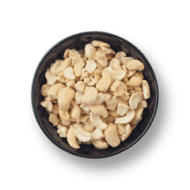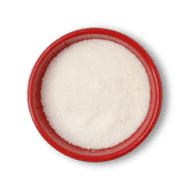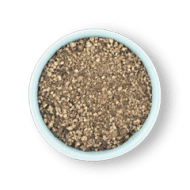Eat Like Pra, Enjoy Spinach Pesto
Pesto’s history goes back to the roots of Genoa’s culture, where Pra farmers grew fresh basil under the sprawling blue skies. Intoxicating and peppery, pesto is a term used for referring to a blend of ingredients that’s well-pounded. In ancient Rome, pesto’s other name was moretum, and the Romans made it by crushing together pine nuts, cheese, herbs, garlic, and olive oil together. Sea salt was mixed in, and the paste was used with various dishes.
Pesto’s domestication happened in India, but its roots remain grounded in the regions of Italy, Liguria, and Provence in France. The classic recipe received a lot of revisions, and families began making their own recipes in Liguria. Canned pesto imports started booming around 1944, and Sunset Magazine published a traditional recipe in 1946. After that, Pesto became pretty popular in North American, and it started gaining attention from around the world post-1990s.
Spinach Pesto is a good way to get your veggies in without eating them raw. It’s a smooth paste that complements dishes like pizzas, pastas, salads, and sandwiches well. It takes minutes to make it, and it’s one of those kitchen staples you never seem to get bored of. Garnish with some lemon juice, sprinkle Parmesan cheese, and you’ve got a tasty treat!
You can make Spinach Pesto using a handful of ingredients. Arugula and Watercress make great substitutes for raw spinach in this recipe.
The lingering scent of pine nuts toasting in the air and cream cheese are aromas familiar to anyone who enters an Italian kitchen. Spinach Pesto recipe is one of those classics kids fall in love with and makes every dish taste simply better. For those who enjoy pastas and macaroni, adding pesto sauce on top of recipes brings out more flavour. You get more zing in every bowl, and basil makes an excellent finisher to dishes.
If you want to enjoy your Pesto recipe alone in its natural state, you sure can. Simply use a spoon and eat it from the bowl or add to salads for an extra crunch. Pesto lovers prefer garnishing this sauce with olive oil and Apple Cider Vinegar for more pizzazz.
And the good news is that if you run out of raw spinach, you can add other dark leafy greens for making this recipe. Europeans modify pesto sauce by using hard cheeses like Parmigiano-Reggiano and basil leaves, blending the mix in olive oil to bind the ingredients together. And all you need to get started learning how to make pesto sauce are a wooden pestle, fresh produce, and creativity in the kitchen.
Get Healthy with Spinach Pesto
Spinach Pesto boasts of an impressive nutritional profile and is a dip that clocks at 507 calories per serving. If you add walnuts and cheese to traditional pesto ingredients, it becomes high in saturated fat and deliciousness.
There are high levels of antioxidants in spinach, and the vegetable is a great source of vitamin K, a key nutrient vital for optimal bone health. Below is a list of the most popular health benefits of eating spinach pesto that you can’t miss:
The spinach in the pesto recipe has decent amounts of Vitamin A. It supports the immune system, vision health and helps in cellular regeneration inside the body. Spinach is a great ingredient because it has numerous health benefits and is credited with blood sugar control. Those who have diabetes find that they tolerate pesto recipes a lot better than traditional dips. Traditional spinach pesto does not cause any blood sugar spikes.
Spinach pesto sauce improves digestion, healthy blood pressure and is delicious comfort food for those odd occasions. More colourful veggies in the recipe equal an added nutrient boost.
Nuts used in spinach pesto recipes are low in cholesterol and have polyunsaturated fats. The pesto sauce is high in fibre and helps in managing metabolic syndrome in individuals who struggle to lose or gain weight.
According to the American Heart Association, Monounsaturated fats in pesto sauce with walnuts help reduce the risk of heart disease. The fats in the walnut pesto recipe boost vitamin E levels in the human body, a nutrient that is missing in most standard national diets
Besides all this, pesto is a fantastic dish for relieving chronic inflammation and has many trace minerals. You need tiny amounts of phosphorus and manganese daily, and pesto recipes provide this without breaking a sweat.
Add pesto sauce to your frittatas and omelettes for an interesting twist. You can add grated coconut powder to the dip for creating a unique flavour profile.
You can use your pesto sauce recipe for pasta, salad, pizza, coleslaw, snacks, or any dish you want. It’s a versatile dip that makes every meal taste better. For those who are too busy, pesto can be a great snack on the go. Use it as tiny dips and take it with you whenever you want. You can deep-freeze it in ziplock bags to ensure a longer shelf life too.
Pesto’s origins have been documented to trace back to the 12th and 13th centuries. Which means it’s been around for a long time and has never gotten old. You can make a
Pesto Buddha Bowl or switch things up by combining it with
white sauce in pasta recipes. If you’re making a burrito wrap, you can turn it into a
pesto wrap by adding the sauce on top.
Arrabbiata Sauce works great with pesto, and you can make Pesto Quinoa which is another excellent dish of its own.
So get ready to let those creative juices flow and be prepared to have a terrific time in the kitchen because you get to decide how you make your pesto recipe and nobody else. Walnut oil and garlic are two popular ingredients used in recipes. If you don’t mind spices, feel free to stir some paprika into the dip. And if you’re sharing it, your family and loved ones will enjoy the fresh and vibrant flavours of the almighty classic.














